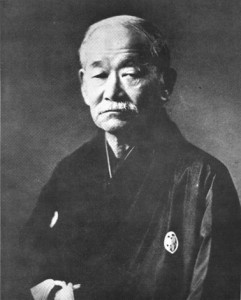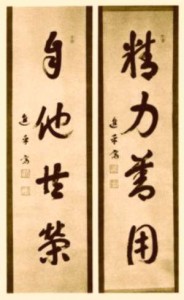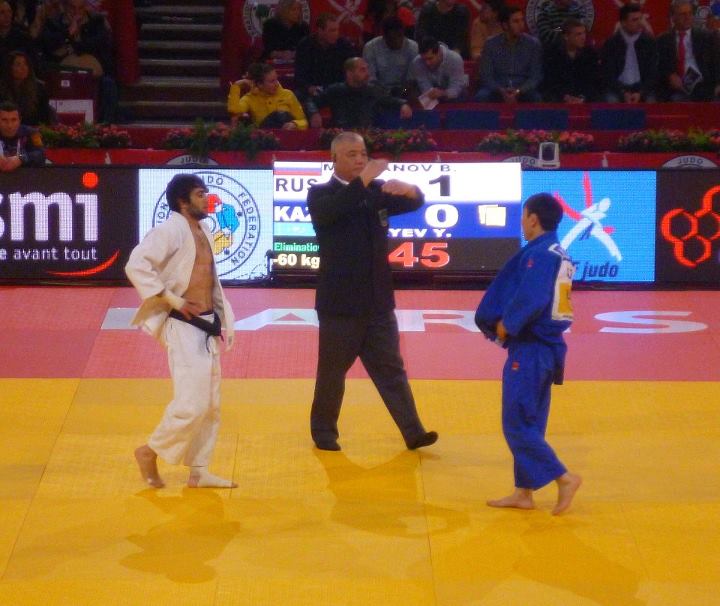History of Judo
 Judo was founded by Dr. Jigaro Kano.Professor Kano was a highly skilled practitioner of several styles of juijitsu. He selected the less dangerous techniques from various styles of juijitsu that were
Judo was founded by Dr. Jigaro Kano.Professor Kano was a highly skilled practitioner of several styles of juijitsu. He selected the less dangerous techniques from various styles of juijitsu that were
 suitable for use in physical education.These selected and modified techniques formed the basis of early judo. Dr. Kano’s teaching and newly developed judo was tested in contests with other martial arts. Judo was tremendously successful and became popular throughout Japan.
suitable for use in physical education.These selected and modified techniques formed the basis of early judo. Dr. Kano’s teaching and newly developed judo was tested in contests with other martial arts. Judo was tremendously successful and became popular throughout Japan.
Professor Kano founded the Kodokan school of Judo in 1882 in Tokyo, Japan. The Kodokan remains a world-renowned school for the instruction of judo. Instruction is provided for Japanese and foreign students. The judo practiced today still is called and known as Kodokan Judo.
Professor Kano promulgated the two principles of Kodokan Judo illustrated below. The first, “Jita Kyoei”, means mutual welfare and benefit. The participants in judo do not participate exclusively for their own benefit but also help others as well. The second, “Seiroyku Zenyo”, stands for maximum efficiency. Using this principle judo makes use of an opponents action or reaction to efficiently and more easily achieve victory.
One of Professor Kano’s dreams was to see the sport of judo endure and be accepted as an Olympic Sport. Professor Kano died in 1938 on his return from a successful meeting with the International Olympic Council. Judo was accepted into the Olympics starting in 1964.
What is Judo?
 Judo today is a sport that retains martial arts and self defense aspects. Most judo schools, called dojos, emphasize the sport aspect of judo. Judo is a competitive individual and team sport. Judo players, or judoka, compete directly against other players and medals or trophies are typically awarded for first, second, and third place winners. Some tournaments also feature teams whose members compete against each other. Judo techniques permitted in tournaments include throwing, pins, chokes, and arm bars (locks). Throwing and pins are permitted for all judoka while chokes and arm bars are allowed only for older students. One of Professor Kano’s innovations was a form of practice called randori. In randoritwo players engage in a friendly competition. The players attack and defend without knowing what their opponent will try next. This form of practice is a good preparation for tournaments and enables the improvement of throwing skills through practice with a moving non-cooperative opponent. Judo also includes a form of practice called kata. In kata, players practice techniques in a prearranged way that encourages understanding of the underlying principles and development of proficiency. The techniques practiced in kata include defenses against striking, kicks and weapons. Kata is generally practiced by more advanced students.
Judo today is a sport that retains martial arts and self defense aspects. Most judo schools, called dojos, emphasize the sport aspect of judo. Judo is a competitive individual and team sport. Judo players, or judoka, compete directly against other players and medals or trophies are typically awarded for first, second, and third place winners. Some tournaments also feature teams whose members compete against each other. Judo techniques permitted in tournaments include throwing, pins, chokes, and arm bars (locks). Throwing and pins are permitted for all judoka while chokes and arm bars are allowed only for older students. One of Professor Kano’s innovations was a form of practice called randori. In randoritwo players engage in a friendly competition. The players attack and defend without knowing what their opponent will try next. This form of practice is a good preparation for tournaments and enables the improvement of throwing skills through practice with a moving non-cooperative opponent. Judo also includes a form of practice called kata. In kata, players practice techniques in a prearranged way that encourages understanding of the underlying principles and development of proficiency. The techniques practiced in kata include defenses against striking, kicks and weapons. Kata is generally practiced by more advanced students.
Benefits of Judo
Judo provides many benefits. Physically, Judo provides a strenuous workout including elements of both aerobic and non-aerobic exercise. Judo exercises and training are designed to help increase strength, endurance, flexibility and balance. Training in correct falling and rolling techniques helps prevent injuries Another physical benefit of judo is the prevention of osteoporosis. The matwork grappling aspects of judo helps keep bones strong, contributing to prevention of osteoporosis. This can be especially important for women and is a benefit not obtainable from most other sports or martial arts.
Judo provides important self defense benefits as well. The vast majority of fights end up on the ground. Judo contains effective methods for controlling an opponent on the ground as well as methods such as chokes and arm bars for making the opponent submit.
Judo also provides numerous mental and social benefits. These include development of perseverance and mental toughness, and emphasis on continued self-improvement of the individual. Many of the principles of Judo can be applied to all aspects of life as well as on the mat.
